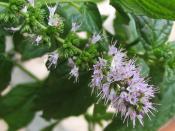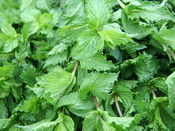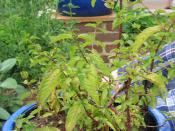There are about 3500 kinds of mint in the mint family. As well as the various commonly-known mints, the mint family also includes thyme, sages, lavender, marjoram, oregano, rosemary, savory, hyssops, basil, catnip, betony, horehound and many other herbs that are important in cooking and herbal medicine. The mint family is a large, unique, easy-to-identify kind of family. It is most likely to be found in backyards. Most of the herbs in the mint family are strong smelling, opposite-leaved, consist of square stems, and their flowers are usually regular. In addition, there are some weedy mints such as ground ivy and bugleweed.
The most common, well-known mints are a subfamily of 30 other herbs that includes curled mint, water mint, peppermint and spearmint. The latter resembles in many ways to peppermint and is the most important herb in the mint family in cooking and medicine. Spearmint is also known as lamb mint, Our Lady's mint, sage of Bethlehem, but its scientific name is Mentha Spicata. In the Moroccan Arabic dialect, it is called "Naanaa". In Greek mythology, "Minthe" was originally a nymph, and Pluto's lover. After his wife Persephone found out, in a fit of rage, transformed "Minth" into a deprived plant to be trod upon. Because Pluto could not undo the spell, he softened the spell by giving a sweet scent that would perfume the air. Spearmint has been used and appreciated for thousands of years and was first discovered by the Romans who spread it across Europe and into Britain where it was used to stop milk from curdling. It was also used to heal sore gums and to whiten teeth.
Like peppermint, spearmint is found all around the world in moist, wastelands and habitats. The characteristics of spearmint are similar to that of peppermint and...



Spearmint
This is very good. The structure is excellant
4 out of 4 people found this comment useful.